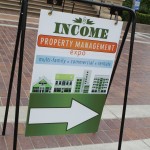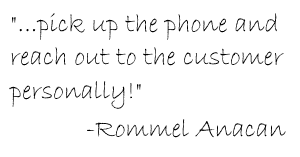6 Ways To Reward Residents For Referrals
Shared post from rent.uloop.com

When it comes to bringing in more tenants and keeping your rooms full, the best method is to get your current tenants to recommend the place. However, encouraging residents to go out of their way to promote their place can be a bit tricky.
This is where resident referral rewards come in. Most will go for the obvious money draw, but there are definitely other ways that may fit in better with your current residents (and save you more money). Here are six different ways to reward your residents for referrals.
1. Cash
The most tried and true method to gaining more residents through resident referrals is to give a flat rate of cash. Depending on your demand and need for referrals, this amount of money can vary greatly. Some apartment complexes will offer anywhere from $50 to $300 just for one valid referral.
Giving an unconditional flat rate appeals to all your residents. Everyone can use a little extra cash. Apartment owners know that no advertising is as good as a solid recommendation from another trusted person which makes resident referrals all the more worthwhile. They’re necessary to keeping your resident economy running at its best.
2. Rent decrease
Another way to reward your residents for giving referrals isn’t to pay them outright, but just to let them pay you less. This is most easily done by allowing some decrease in rent, whether it be waiving a half month’s or entire month’s fee. If your resident is loyal and plans to stay for a while, it could mean simply lowering their monthly rent by a small amount so that it adds up in savings over time. Essentially, a rent decrease is a similar bargain as the cash offer, but just handled in a different way that could be easier and more cost effective.
3. Gift cards
Another way to promote resident referrals if you aren’t keen on just giving out cash is to reward your tenants with gift cards. Most towns and areas have similar stores that are useful no matter the situation. From Walmart to McDonald’s to Applebee’s, give your residents a choice of whichever gift card they feel they’ll get the most use out of.
Some people like getting gift cards instead of cash because they’ll either end up just saving the cash or spending it all immediately. If they’re given a gift card, they may be more apt to treat themselves modestly on a nice meal or some new shirts.
4. Cleaning services
Some people will do almost anything to avoid cleaning their apartment. When you have people like this, sometimes a cleaning service can be of the most value. It also works as a win-win for you as the landlord because you know the space is being kept up. You could offer them a free carpet cleaning, window washing, painting, landscaping if they have it or whatever else they seem to be needing.
Sometimes it is best to reward tenants with something immediately practical and useful rather than something that could be spent on something trivial.
5. Local benefits
If you’re looking to boost your resident referrals and help out your local economy, consider giving them benefits and gift cards to local places and shops. Residents may find appeal in a free gym membership or tickets to a community event. They may also find appeal in small gift cards to multiple local shops around town.
If you go to some of these businesses, they may even give you free gift certificates for your residents to help promote their own sales. This could be a good way to keep your own costs down by not having to pay out of pocket and to bolster the community around you.
6. Use a point system
Some apartment complexes already have resident reward point systems that include resident referrals. Tenants can rack up differing amounts of points based on paying rent in a timely manner, renewing their lease, helping out in local community events, amongst other things.
Resident referrals can easily be worked into this system likely as the highest value of points. When your residents reach their point goal, they can then be rewarded with any of the aforementioned gifts above. Reward systems encourage residents to keep up their good work continuously rather than doing one good thing and stopping. This could also help the reward seem greater and the tenant more accomplished if they’ve been working toward it for some time.
If you’ve followed any of these ideas, or even come up with your own, you’ll soon see the benefits of the resident referral. One good personal review and recommendation can win someone over dozens of other online reviews and websites. They are absolutely key in making sure your complex stays full and profitable. Their power can’t be overstated.

















































































 The same can be said in the apartment industry. Neglect maintenance and you will quickly find out how important maintenance is to your residents. In 2012, SatisFacts Research published an e-book that revealed the highest-ranking factor for an apartment resident’s renewal decision was “Quality of maintenance service provided”. Maintenance ranked higher than perks, parties and even the desire for more parking.
The same can be said in the apartment industry. Neglect maintenance and you will quickly find out how important maintenance is to your residents. In 2012, SatisFacts Research published an e-book that revealed the highest-ranking factor for an apartment resident’s renewal decision was “Quality of maintenance service provided”. Maintenance ranked higher than perks, parties and even the desire for more parking.
 Some of my favorite things to read online are the things people say when they’re commenting on stories! I am always amazed at how ugly, mean-spirited and downright awful some people can be when they communicate behind a wall of anonymity provided by the computer.
Some of my favorite things to read online are the things people say when they’re commenting on stories! I am always amazed at how ugly, mean-spirited and downright awful some people can be when they communicate behind a wall of anonymity provided by the computer.

 While technology allows us to communicate in every way possible, it also seems to isolate us from people as well. In today’s world where we text more than we call, where we Facebook more than we meet for coffee, there is something emotionally powerful when you pick up the phone and say,
While technology allows us to communicate in every way possible, it also seems to isolate us from people as well. In today’s world where we text more than we call, where we Facebook more than we meet for coffee, there is something emotionally powerful when you pick up the phone and say,


